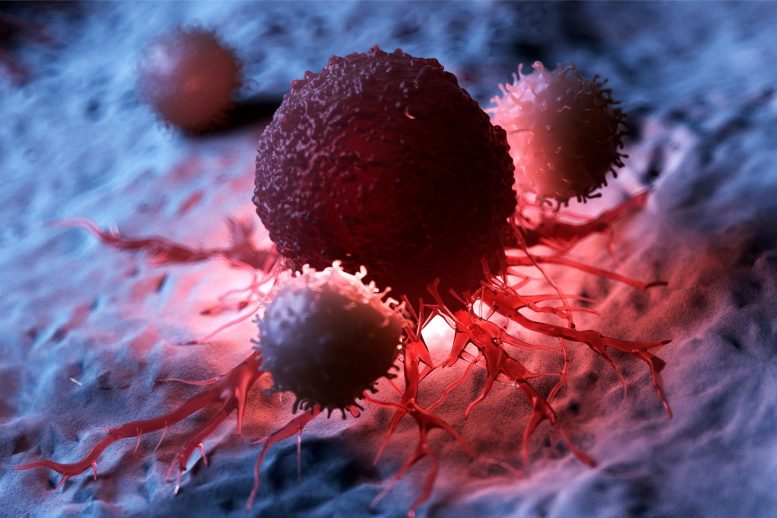
Researchers proved that sea corals are a source of eleutherobin, a chemical with anti-cancer properties.
Researchers find that sea corals are a source of a sought-after “anti-cancer” compound
The ocean floor is riddled with mysteries, but scientists have just discovered one of its best-kept secrets. For the last 25 years, researchers have been looking for the source of a natural chemical that has shown promise in preliminary studies for treating cancer. Now, researchers at the University of Utah Health report that easy-to-find soft corals—flexible corals that resemble underwater plants—make the elusive compound.
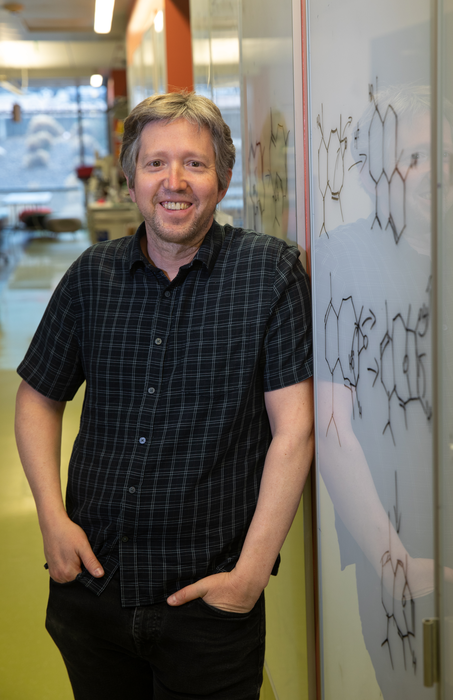
Eric W. Schmidt, Ph.D., Professor, Medicinal Chemistry, University of Utah. Credit: Kristan Jacobsen for University of Utah Health
After determining the source, the researchers went on to discover the animal’s DNA code for synthesizing the chemical. They were able to carry out the initial stages of re-creating the soft coral chemical in the laboratory by following those directions.
“This is the first time we have been able to do this with any drug lead on Earth,” says Eric Schmidt, Ph.D., professor of medicinal chemistry at the University of Utah Health. He led the study with Paul Scesa, Ph.D., postdoctoral scientist and first author, and Zhenjian Lin, Ph.D., assistant research professor.
The breakthrough opens the door to generating the compound in big enough quantities for rigorous testing, which could one day result in a new cancer-fighting tool.
A second research group led by Bradley Moore, Ph.D., from Scripps Institution of Oceanography at the University of California San Diego, independently showed that corals make related molecules. Both studies were recently published in the journal Nature Chemical Biology.
A World of Possibilities
Soft corals contain thousands of drug-like compounds that may be used as anti-inflammatory drugs, antibiotics, and other medicines. However, acquiring enough of these compounds has been a big obstacle to turning them into clinically useful medications. According to Schmidt, these other compounds should now be accessible using this new method.
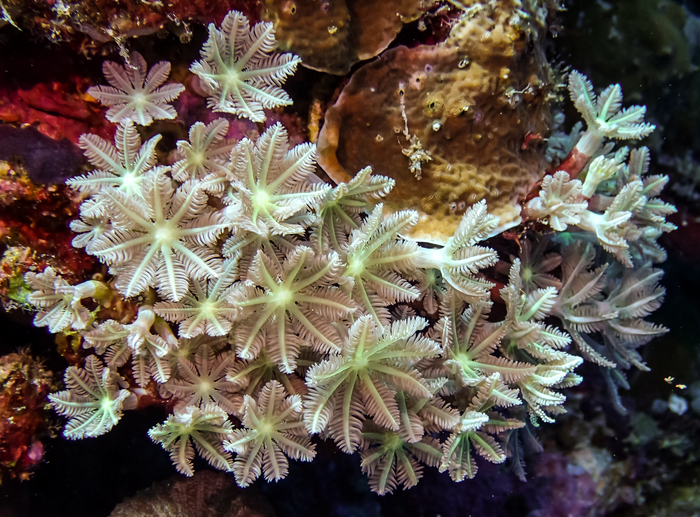
Soft corals are thought to make thousands of drug-like compounds that could work as anti-inflammatory agents, antibiotics, anti-cancer therapeutics, and other drug leads. Credit: Bailey Miller.
Corals aren’t the only animals that harbor potential therapeutics. Nature is crawling with snakes, spiders, and other animals known to carry chemicals with healing properties. Yet that compounds from soft corals offer distinct advantages for drug development, Schmidt says.
Unlike venomous chemicals that are injected into prey, corals use their chemicals to ward off predators that try to eat them. Since they are made to be eaten, the soft coral chemicals are easily digestible. Similarly, drugs derived from these types of compounds should be able to be given as pills with a glass of water, rather than taken by injection or other more invasive means. “These compounds are harder to find but they’re easier to make in the lab and easier to take as medicine,” says Schmidt.
These possibilities had been just out of reach for decades. Getting to this point took the right know-how and a little luck.
Hunting for the Source
Scesa found the long-sought-after compound in a common species of soft coral living off the Florida coast—just a mile from his brother’s apartment. In the 1990s, marine scientists reported that a rare coral near Australia carried a chemical, eleutherobin, with anti-cancer properties. The chemical disrupts the cytoskeleton, a key scaffold in cells, and soft corals use it as a defense against predators. But laboratory studies showed that the compound was also a potent inhibitor of cancer cell growth.
In the decades after, scientists searched but could not find the fabled “holy grail” chemical in the quantities needed for drug development and couldn’t remedy the problem without understanding how the chemical was made. Dogma had it that, similar to other kinds of marine life, the chemical was synthesized by symbiotic organisms that lived inside the animals.
“It didn’t make sense,” Scesa says. “We knew that corals must make eleutherobin.” After all, he and Schmidt reasoned, some soft coral species don’t have symbiotic organisms and yet their bodies contain the same class of chemicals.
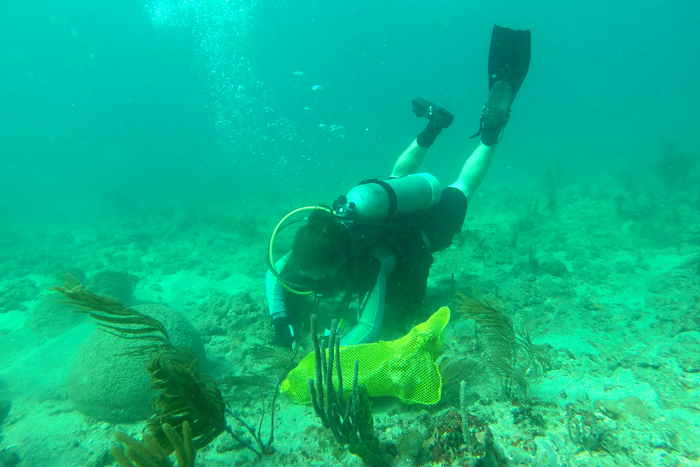
Paul Scesa, Ph.D., dives for soft corals off the Florida coast. He studies the potential of soft coral chemicals as drug leads. Credit: Paul Scesa
Solving the mystery seemed a job made for Scesa. As a boy growing up in Florida, the ocean was his playground, and he spent countless hours exploring its depths and wildlife. In graduate school, he developed a penchant for organic chemistry and combined the two interests to better understand the chemical diversity of the seas.
Later, he joined the lab of natural products scientist Schmidt with a mission to track down the source of the drug lead. Scesa suspected coral species familiar to him might have the answer and brought small live samples from Florida to Utah, and the real hunt began.
Decoding the Recipe
The next step was to find out whether the coral’s genetic code carried instructions for making the compound. Advances in DNA technology had recently made it possible to rapidly piece together the code of any species. The difficulty was that the scientists didn’t know what the instructions for making the chemical should look like. Imagine searching a cookbook for a certain recipe, only you don’t know what any of the words inside the book mean.
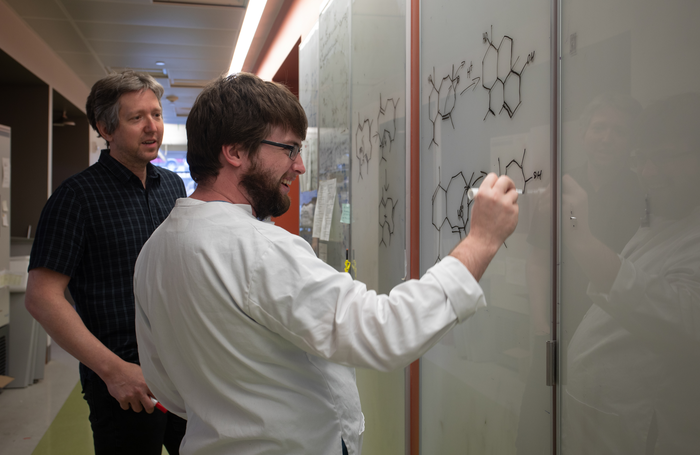
Eric Schmidt, Ph.D., and Paul Scesa, Ph.D., working through the steps to make the potential anti-cancer compound, eleutherobin. Credit: Kristan Jacobsen for University of Utah Health
“It’s like going into the dark and looking for an answer where you don’t know the question,” remarks Schmidt.
They addressed the problem by finding regions of coral DNA that resembled genetic instructions for similar types of compounds from other species. After programming bacteria grown in the lab to follow coral DNA instructions specific to the soft coral, the microorganisms were able to replicate the first steps of making the potential cancer therapeutic.
This proved that soft corals are the source of eleutherobin. It also demonstrated that it should be possible to manufacture the compound in the lab. Their work is now focusing on filling in the missing steps of the compound’s recipe and determining the best way to produce large amounts of the potential drug.
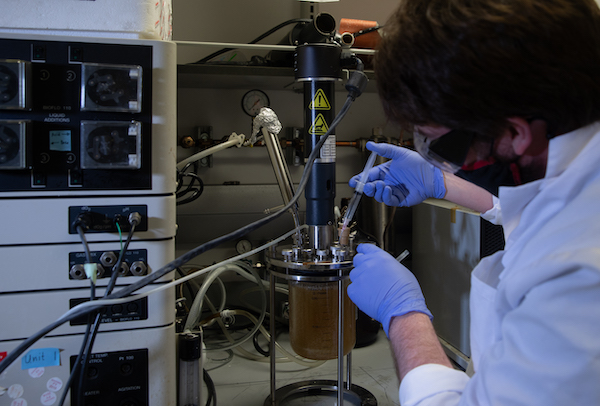
Paul Scesa uses a bioreactor to produce large amounts of chemicals that are found in small amounts in nature. Credit: Kristan Jacobsen for University of Utah Health
“My hope is to one day hand these to a doctor,” says Scesa. “I think of it as going from the bottom of the ocean to bench to bedside.”
The research was supported by the National Institutes of Health and the ALSAM Foundation.
Reference: “Ancient defensive terpene biosynthetic gene clusters in the soft corals” by Paul D. Scesa, Zhenjian Lin and Eric W. Schmidt, 23 May 2022, Nature Chemical Biology.
DOI: 10.1038/s41589-022-01027-1

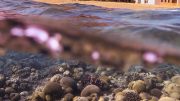
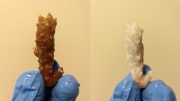
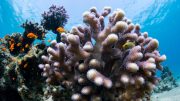
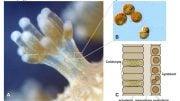
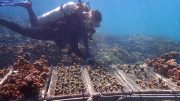
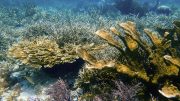
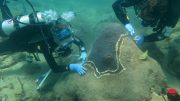
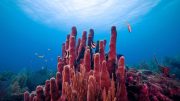
Another very solid reason for all of humanity to take care of its precious planetary gift of water. oxygen & earth & everything that depends on these substances for life. Coral being a very robust, even proliific species of life, yet fragile creature which thrives in a very limited ecosystem so close to our polluted overly abused biosphere & eco-system along our coastlines. Our fresh water sources & it’s entire eco system is in extreme and present danger from our industrial foolishness and economic ignorance The Ocean being not far behind, Over harvesting of the human desired food chain and obscene pollution practices & standards have created an imbalance effecting all species, and with all species of life being interconnected it is past due time to stop and realize and hopefully strive to amend the obvious consequences of our continuing actions and activities that are contributing to planetary demise of life as we knew it. Especially while we have these new capabilities and people dedicated to open minded intelligent research and development to do so, for the greater good of all forms of life on earth. Our planet is not an amusement park for dumbed down humans,,or a convenience store for instant gratification, or an epic hollywood movie designed to distract us from harsh realities and our god given responsibiliities to respect life as a whole…